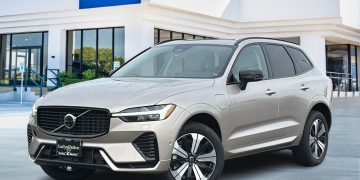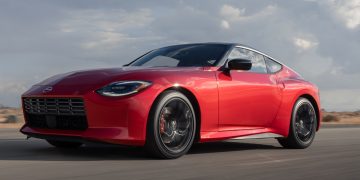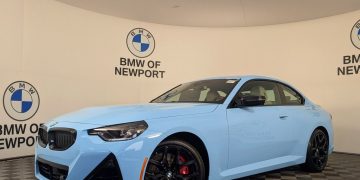Introduction: The Shift Towards Hybrid Vehicles
In recent years, there has been a noticeable shift in consumer preferences toward hybrid vehicles rather to traditional gasoline-powered cars. While the transition from gasoline to electric vehicles (EVs) is also gaining momentum, hybrid cars, which combine both an internal combustion engine (ICE) and an electric motor, have carved out a significant niche in the automotive market. Car buyers are increasingly attracted to the idea of driving a vehicle that offers the best of both worlds: the fuel efficiency and reduced emissions of an electric vehicle, with the convenience and long-range capabilities of a traditional car.
This article will explore the key reasons why more car owners are opting for hybrid cars over traditional gasoline vehicles. We will discuss the environmental benefits, cost savings, technological advancements, and lifestyle factors that contribute to the rising popularity of hybrid cars.
1. Environmental Concerns and Sustainability
a. Reduced Emissions
One of the primary reasons why consumers are choosing hybrid cars over traditional gasoline vehicles is the significant reduction in harmful emissions. Hybrid vehicles are designed to reduce the vehicle’s carbon footprint by combining a gasoline engine with an electric motor that operates at low speeds or during idle. This hybrid system allows the vehicle to achieve better fuel efficiency, which leads to a reduction in the total amount of greenhouse gases and pollutants released into the atmosphere.
- Lower CO2 emissions: Hybrid cars emit far fewer carbon dioxide (CO2) emissions compared to traditional gas-powered vehicles, helping to combat climate change and reduce air pollution.
- Reduced fuel consumption: The electric motor in hybrid vehicles helps reduce the need for the gasoline engine to operate constantly, which means less fuel is burned and fewer pollutants are produced.
For environmentally conscious drivers, hybrids offer a way to reduce their personal contribution to air pollution without making the leap to a fully electric vehicle, which may still be a concern due to factors like range anxiety or charging infrastructure.
b. Regulatory Pressures and Incentives
Government regulations aimed at reducing emissions are another factor pushing consumers toward hybrid vehicles. Many countries have implemented stricter emissions standards for new vehicles, encouraging automakers to produce more fuel-efficient and environmentally friendly cars.
- Government incentives: In many regions, buyers of hybrid cars can benefit from tax breaks, rebates, and other financial incentives designed to encourage the adoption of cleaner vehicles. These incentives help offset the often higher initial purchase price of hybrids compared to traditional vehicles.
- Emission reduction goals: Governments around the world are pushing for reductions in the overall carbon footprint of the transportation sector, and hybrid cars represent a practical way for consumers to contribute to these goals while still enjoying the convenience of traditional gasoline-powered driving.
2. Fuel Efficiency and Cost Savings
a. Reduced Fuel Consumption
Hybrid cars are specifically designed to optimize fuel efficiency. By using the electric motor at lower speeds and during stops, hybrids reduce the amount of fuel needed to power the vehicle. This results in higher miles per gallon (MPG) compared to conventional gasoline vehicles.
- City driving advantage: Hybrid cars excel in stop-and-go traffic, where traditional gas-powered vehicles waste more fuel. Since hybrids can switch between the electric motor and the gasoline engine, they significantly improve fuel economy in urban environments.
- Long-term savings: While hybrid vehicles often have a higher initial purchase price than conventional cars, the savings in fuel costs over the long term can offset the difference. Many hybrid owners report spending significantly less on fuel, which translates into substantial cost savings over the life of the vehicle.
b. Lower Operating Costs
In addition to reduced fuel costs, hybrid vehicles often have lower maintenance costs compared to traditional gasoline cars. This is because hybrids typically experience less wear and tear on the gasoline engine, as the electric motor takes over in many driving situations.
- Regenerative braking: Hybrids use regenerative braking, which recovers energy during braking and converts it back into electricity to recharge the battery. This reduces the strain on the brake system, leading to less frequent brake replacements and lower maintenance costs.
- Longevity of engine components: Since the electric motor handles much of the driving load, the gasoline engine in a hybrid vehicle may last longer and require fewer repairs than that of a traditional vehicle.
For budget-conscious buyers, these ongoing cost savings make hybrids an attractive alternative to traditional gasoline vehicles.

3. Range and Convenience: The Best of Both Worlds
a. The Convenience of a Gasoline Engine with the Benefits of Electric Power
One of the most significant advantages of hybrid vehicles over fully electric vehicles is the range and refueling convenience. While EVs are limited by their battery range and require access to charging stations, hybrid vehicles offer the flexibility of a gasoline engine combined with electric driving capabilities.
- Extended driving range: Hybrids do not face the same “range anxiety” as fully electric vehicles because the gasoline engine acts as a backup power source. This means that hybrid drivers can travel longer distances without worrying about running out of charge, which is especially useful for long road trips or in areas where charging stations may not be easily accessible.
- Refueling convenience: Unlike fully electric vehicles, which require charging times ranging from 30 minutes to several hours, hybrid vehicles can be refueled at any gas station in minutes. This makes them a more convenient option for those who need flexibility and fast refueling.
This convenience makes hybrids an appealing option for consumers who want to embrace cleaner technology without sacrificing the convenience of traditional driving.
b. Easy Transition for Traditional Car Owners
For many drivers, the transition from a conventional gasoline vehicle to a hybrid is easier and more comfortable than making the jump to a fully electric car. Hybrid vehicles operate in a very similar manner to traditional cars but with enhanced efficiency.
- No need for special charging infrastructure: Unlike electric vehicles, hybrids do not require home charging stations, which can be an added cost and inconvenience for some owners. This makes hybrids an appealing choice for people who want to reduce their environmental impact without the need for major lifestyle changes.
- Familiar driving experience: Many hybrid vehicles are designed to drive similarly to traditional gas-powered cars. There’s no need for drivers to learn new technologies, and the transition feels relatively seamless.
This ease of transition appeals to consumers who are hesitant about making the move to fully electric cars but still want to benefit from some of the advantages of cleaner and more efficient technology.
4. Technological Innovation and Consumer Appeal
a. Improved Performance and Driving Experience
In the past, hybrid vehicles were often perceived as lacking in performance and driving pleasure. However, as hybrid technology has evolved, many modern hybrids offer powerful performance and a smooth, enjoyable driving experience. Manufacturers have worked to ensure that hybrid cars are not only efficient but also fun to drive.
- Sporty hybrid options: Many hybrid cars now come in sporty models with impressive acceleration and handling. For example, the Toyota Prius has evolved from a basic, utilitarian hybrid to a more stylish and well-rounded vehicle, and the Honda Accord Hybrid offers a comfortable and efficient driving experience with plenty of power when needed.
- Seamless integration: Modern hybrid vehicles are equipped with advanced technologies that make the transition between the electric motor and gasoline engine nearly imperceptible to the driver. This results in a smooth and responsive driving experience that doesn’t sacrifice comfort for efficiency.
Consumers who once viewed hybrids as a compromise are increasingly seeing them as a viable alternative to traditional gasoline vehicles, with both performance and efficiency as key selling points.
b. Technological Features and Innovation
Hybrids are often equipped with the latest technological innovations, making them attractive to tech-savvy consumers. From advanced infotainment systems to safety features like adaptive cruise control and lane-keeping assist, hybrid vehicles often come with high-tech amenities that appeal to modern drivers.
- Infotainment and connectivity: Many hybrid cars feature state-of-the-art infotainment systems, including Apple CarPlay, Android Auto, and wireless connectivity features, which are becoming increasingly standard in the automotive industry.
- Safety and convenience features: Hybrid cars often come with a suite of advanced safety features, such as automatic emergency braking, collision warning, and parking assist, which not only enhance driver safety but also improve the overall driving experience.
5. Conclusion: The Hybrid Advantage
In conclusion, the growing popularity of hybrid vehicles can be attributed to several factors, including environmental concerns, fuel efficiency, cost savings, and technological innovation. Hybrid vehicles offer an ideal solution for consumers who want to reduce their environmental impact without sacrificing the convenience, range, or driving experience of traditional gasoline-powered cars. As the technology continues to evolve, hybrids will likely become an even more attractive choice for a broad range of consumers, from environmentally conscious drivers to those seeking a balance between performance, cost, and sustainability.
Ultimately, the hybrid car represents a compelling compromise for those who are not yet ready to make the leap to fully electric vehicles but want to embrace a cleaner, more efficient future of transportation.


































Discussion about this post